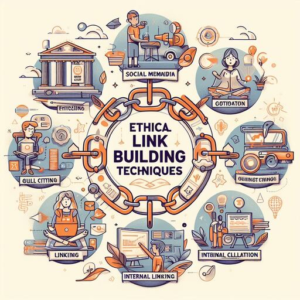Guest posting is a simple yet powerful content marketing strategy, but many are unsure of exactly how the process unfolds from start to finish. This comprehensive guide breaks down each step in a clear, easy-to-understand way so aspiring guest bloggers understand what to expect and how to get results.
Finding Opportunities
The first step is browsing blogs and websites in your industry or topics of interest to identify potential host sites. Most good blogs allow guest contributions to diversify their content, and their “About” or “Contact” page will specify submission guidelines. Look for niches you’re an expert in and make a running list of 10-15 sites to target.

As you discover new blogs, thoroughly read through several of their regular posts to get a feel for their voice, writing style and typical article length. Pay attention to common topics covered and any gaps the site could use fresh perspectives on. Bookmark the ones with styles and subject matter you feel confident contributing quality pieces to.
Preparing Effective Pitches
Now that you’ve found potential hosts, it’s time to carefully craft individual pitch emails. Start by introducing yourself and briefly establishing your qualifications or background related to the site’s niche. Mention 2-3 of your most relevant, recent articles or credits.

The body should outline your proposed article topic idea in 1-2 sentences max. Explain how this idea directly benefits their readers by either answering common questions, addressing underserved topics, or sharing a unique take on a subject they regularly discuss. To prove it’s more than self-promotion, give some teaser points from your outline rather than just the headline.
Link to any social profiles and include 2-3 persuasive sentences on why your background and experience make you a good match. Thank them for considering and reiterate your flexibility to modify the piece based on their needs. Make it clear you value their community above all. Personalize each pitch with the blog’s name for an authentic feel.
Writing the Article
After receiving interest, it’s time to flesh out the article following all provided guidelines. Consistency with the site’s style, both in terms of formatting and level of detail, is key to approval. Make sure to disclose affiliate links or other conflicts of interest upfront for transparency.

Your insight should directly address the readers’ perspective by either answering questions, solving problems, or offering a fresh take on a common issue – not just promoting yourself. The tone should be highly approachable and readable. Include relevant internal and external links for context. Finish with a strong conclusion call to action.
Getting Published

Once complete, carefully proofread before attaching a high-quality draft to your response email. The host may provide feedback requesting adjustments or further insights for their community. Iterate patiently while maintaining your distinct voice learned from studying the blog. With a user-focused dialogue, you can gain their trust to publish.
Promoting and Maintaining Relationships

When published, avoid directly promoting the piece on the host site out of respect for their promotion efforts. Your channels can, however, respectfully share the new work. Consistency over time builds key industry connections as your expertise and collaborative spirit shine through. Nurture these relationships for future opportunities to continue empowering helpful conversations.






